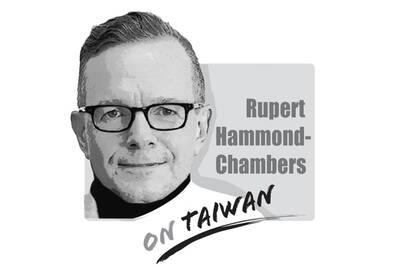Taiwan’s first batch of M1A2T tanks, a specialized version of the US-made M1A2 Abrams, arrived at the Port of Taipei this month. Approved for sale in 2019 during the administration of then-US president Donald Trump, the deal includes 108 tanks and related equipment at a total cost of NT$40.5 billion (US$1.24 billion). The delivery schedule comprises three phases: 38 tanks this year, 42 next year and the remaining 28 in 2026. The M1A2T is equipped with 120mm smoothbore guns, capable of penetrating 850mm-thick armor, and incorporates advanced hunter-killer targeting systems. This acquisition represents Taiwan’s first significant upgrade in armored vehicles since it received M60A3 tanks in 1994.
When the deal was sealed in 2019, the Ministry of National Defense and military officials praised the tanks for their firepower, mobility and ability to engage targets from elevated positions, arguing that they outperform China’s Type 99 and Type 63A tanks. In theory, the M1A2Ts significantly enhance Taiwan’s anti-landing defense capabilities in alignment with the country’s multilayered line of defense. While Taiwan emphasizes its focus on sea and air defenses in a potential conflict, the M1A2T is expected to provide critical ground firepower in countering a Chinese land invasion.
Despite their advanced capabilities, the M1A2Ts come with significant challenges, particularly for Taiwan’s defensive requirements. Tanks are developed with specific operational contexts in mind, and the Abrams was originally designed for tank-on-tank battles on open plains. Over four decades of use in conflicts such as Iraq and Kosovo, the M1 Abrams has undergone substantial upgrades, but these have also increased its weight and cost. The first-generation models weighed about 50 tonnes, but the current versions can reach up to 70 tonnes, requiring specialized transport equipment that might not be readily available in Taiwan.
The M1A2s are also among the most expensive in the world, not only in procurement, but also in maintenance and operational costs. Unlike diesel-powered tanks, the M1A2 uses a 1500 horsepower gas turbine engine fueled by gasoline or jet fuel. While this engine offers faster performance and quieter operation, it consumes significantly more fuel, limiting the tank’s range and complicating logistics, especially under a potential Chinese blockade. Taiwan’s terrain adds further complications. The nation’s rugged topography, limited plains, dense water networks and bridges not designed to withstand such heavy loads limit the mobility and effectiveness of the M1A2Ts. In urban warfare, which is likely in a Chinese invasion scenario, the M1A2Ts’ size and weight make them less maneuverable and more vulnerable to ambushes.
Taiwan’s strategic focus should prioritize asymmetric capabilities — mobile anti-ship missiles, fast attack boats, tactical combat and autonomous kamikaze drones and defensive mines — over large and expensive platforms. These systems are better suited to exploit Taiwan’s geographic advantages and counter China’s numerical and technological superiority.
The M1A2T tanks might be a modern touch to Taiwan’s aging tank fleets and symbolize its commitment to strengthening its defense capabilities. However, their long-term value must be assessed within the broader context of Taiwan’s unique challenges and strategic goals. Rather than matching China weapon-for-weapon,
Taiwan’s defense strategy should emphasize agility, cost-efficiency, adaptability and sustainability to ensure it remains prepared for any potential threat.
Harun Talha Ayanoglu is a research associate at the Taiwan Center for Security Studies.
The gutting of Voice of America (VOA) and Radio Free Asia (RFA) by US President Donald Trump’s administration poses a serious threat to the global voice of freedom, particularly for those living under authoritarian regimes such as China. The US — hailed as the model of liberal democracy — has the moral responsibility to uphold the values it champions. In undermining these institutions, the US risks diminishing its “soft power,” a pivotal pillar of its global influence. VOA Tibetan and RFA Tibetan played an enormous role in promoting the strong image of the US in and outside Tibet. On VOA Tibetan,
Sung Chien-liang (宋建樑), the leader of the Chinese Nationalist Party’s (KMT) efforts to recall Democratic Progressive Party (DPP) Legislator Lee Kun-cheng (李坤城), caused a national outrage and drew diplomatic condemnation on Tuesday after he arrived at the New Taipei City District Prosecutors’ Office dressed in a Nazi uniform. Sung performed a Nazi salute and carried a copy of Adolf Hitler’s Mein Kampf as he arrived to be questioned over allegations of signature forgery in the recall petition. The KMT’s response to the incident has shown a striking lack of contrition and decency. Rather than apologizing and distancing itself from Sung’s actions,

US President Trump weighed into the state of America’s semiconductor manufacturing when he declared, “They [Taiwan] stole it from us. They took it from us, and I don’t blame them. I give them credit.” At a prior White House event President Trump hosted TSMC chairman C.C. Wei (魏哲家), head of the world’s largest and most advanced chip manufacturer, to announce a commitment to invest US$100 billion in America. The president then shifted his previously critical rhetoric on Taiwan and put off tariffs on its chips. Now we learn that the Trump Administration is conducting a “trade investigation” on semiconductors which
By now, most of Taiwan has heard Taipei Mayor Chiang Wan-an’s (蔣萬安) threats to initiate a vote of no confidence against the Cabinet. His rationale is that the Democratic Progressive Party (DPP)-led government’s investigation into alleged signature forgery in the Chinese Nationalist Party’s (KMT) recall campaign constitutes “political persecution.” I sincerely hope he goes through with it. The opposition currently holds a majority in the Legislative Yuan, so the initiation of a no-confidence motion and its passage should be entirely within reach. If Chiang truly believes that the government is overreaching, abusing its power and targeting political opponents — then